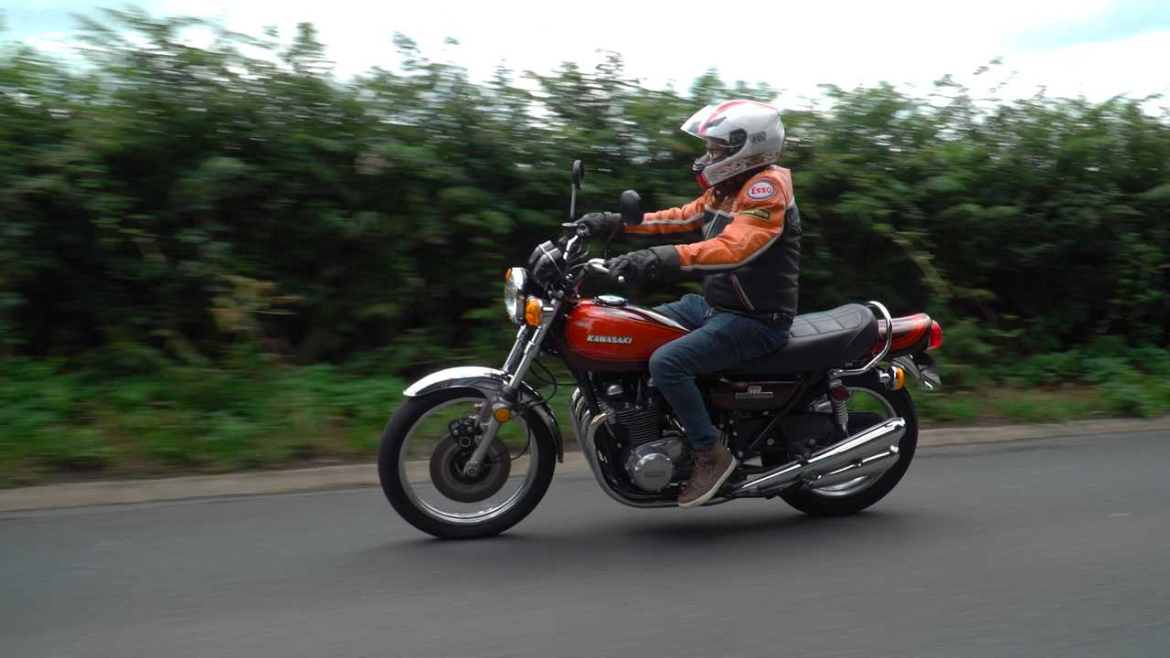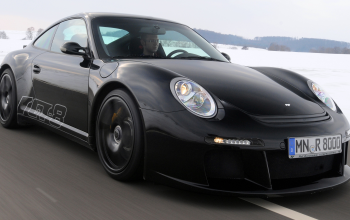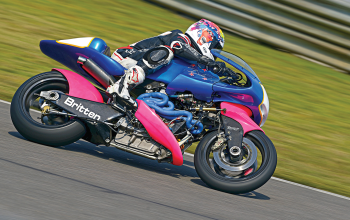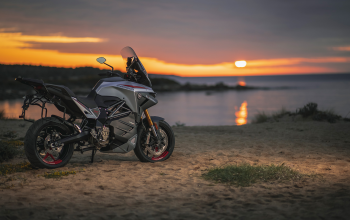If you ever find yourself surfing on the internet to check out some classic, iconic motorbikes, chances are you will end up seeing at least one Kawasaki in each article you go through. In this piece of our Retro Reviews, we will take a look at Kawasaki’s iconic and classic motorbikes that the enthusiasts crave for for decades. These models have established Kawasaki’s reputation in the motorcycle business for years to come. No time for waiting, let’s dig into our article.

Kawasaki Triple, the ”Widowmaker” (H1-H2)
The Triples were series of motorbikes by Kawasaki produced between 1968 to 1980. The triples name refer to the engine ranges of 250 to 750 cc, the most powerful of which was the H2 750, made between 1972 and 1975. Apart from being the first ever motorcycle model to be fitted with capacitor discharge ignition, the first model, Mach III H1 500 was immediately a sale success as the air-cooled, three-cylinder two stroke engines offered sheer acceleration that left all the other rivaling brands in the dust. However, it also gained a notorious reputation for its difficult handling especially for the inexperienced bikers thanks to its unrivalled power-to weight ratio of 0.361 HP per one kilo.
The most powerful model produced 74 HP and weighed 205 kilograms (451 lbs). The lightness pays off as its top speed was 190 km/h (120 mph), which was considered highly dangerous yet staggering speed figure. The speed allowed the H2 750 to complete a quarter mile in 12 seconds, which was an astonishing figure for its day. Although it was a quick bike, it had its drawbacks. Apart from its twitchy handling, the bike was also known to to wheelies because of the immediate increase of the power curve upon throttle response. Thankfully, the unfortunate inexperienced rider could hit the praised 180 mm brakes to stop the terror and rethink their bike choices. Despite its dangerous nature, the Triple series almost killed the whole British motorcycle industry upon its success. However, the updated H2 series brought terms like ”comfort” and ”efficiency”, which were unheard by any H1 owners. The Triple series made Kawasaki not only domestic but also a worldwide success, and the model Mach III H1 500 became the most sought for model by enthusiasts and collectors.

Kawasaki Z1
Come on, a post about Kawasaki motorbikes would be incomplete with one of the most iconic classic motorbikes that you can see on the road, the Z1 900. Introduced in 1973, the Z1 was Kawasaki’s answer to Honda’s new speed demon CB750. Z1 was the most powerful 4 cylinder motorbike in the world upon its introduction. The Z1’s release and purpose was entirely based on speed wars between the two brands, just like the cars’ top speed wars of today. Unlike, let’s say, a Venom F5, however, the Z1 900 could actually be bought by the common people, and they would like to buy one, because this monstrous, 903cc bike produced 82 HP and had an insane top speed of 209 km/h (130 mph) thanks to its big 4-cylinder engine that used double-overhead-camshaft system, which became popular thanks to the Z1. The bike was also light, only weighing 249 kg (550 lbs), which heavily contributed to its stellar performance. The 5-speed transmission also offered quick gear chances and invited the rider to pick up the pace.

Despite its massive power and unmatched speed, the Z1 was praised for its comfort, stability both at low and high speeds and easy start. The only drawback the bike received by testers was that the rear tires, absorbers and the chain wore out fast after testing. Despite the flaws on the rear side, the Z1 was a huge success. Not exactly a widowmaker like the Triple series, but the Z1 replaces raw lunacy with calculated speed thrills. The Z1 was not only an enthusiast favourite, but it was also a record breaker as it set the world FIM and AMA record for 24-hour endurance on the banked Daytona racetrack, clocking up 2,631 miles with an average speed of 175 km/h (109 mph). The Z1 also earned the MCN ‘Machine of the Year’ award three years straight, from 1973 to 1976 (based on the poll run by Motorcycle News). Decades later, Kawasaki unveiled the Z900 RS in 2017, a tribute to the Z1 model with modern features like 6-speed gearbox, fuel injection, water cooling, ABS and TC. It shows that Kawasaki respects and appreciates their glorious past models, which is a joy to see.
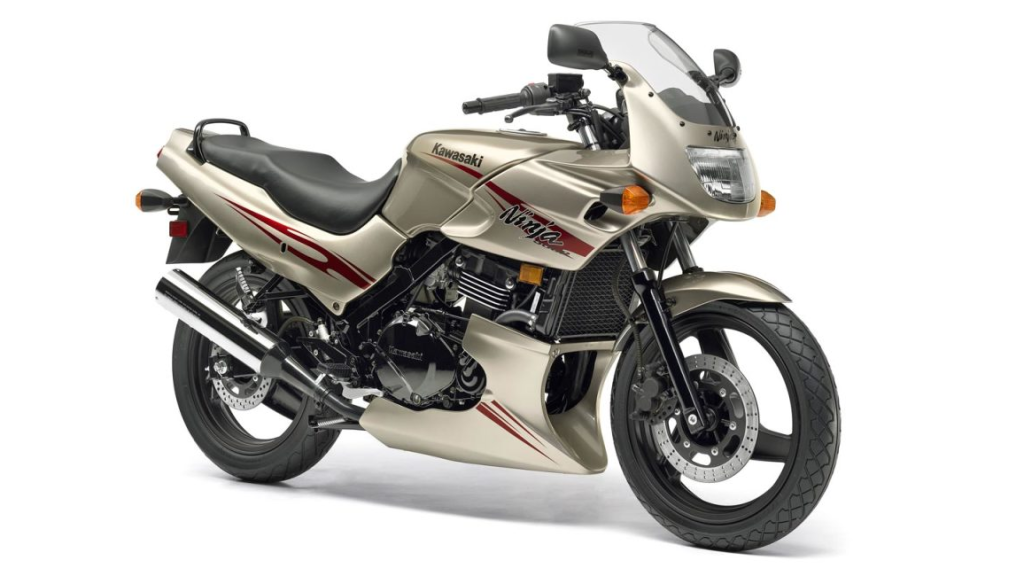
Kawasaki EX 500R Ninja
After the Triple series and Z1, it’s time for a youngtimer future classic, the EX 500R Ninja, produced between 1987 to 2009. The Ninja 500R, formerly known as EX 500R, was a fan favourite because of its great comfort and easy but fun handling that offered new riders an easy entrance for the superbike segment and budget thrills for the experienced bikers. It was powered by a 498 cc parallel-twin engine mated to a 6-speed constant mesh gearbox, producing 50 HP and weighing 170 kg (370 lbs), allowing the EX 500R to accelerate from 0 to 60 in 4.4 seconds to a top speed of 180 km/h (110 mph). The EX 500R had a partial facelift in 1994 with rear disk brake replacing drum brakes, bigger 17-inch wheels and minor styling changes. The bike kept its styling until its end of production in 2009.
The 500R Ninja was a huge sale success since the bike offered a sporty look with an affordable retail price tag of just $2899 back in its introduction. Apart from its cheap price, its 64 MPG efficiency and the availability of affordable genuine spare parts meant that it was a workhorse for road racing. Indeed, United States Classic Racing Association has a class that’s composed of stock 500R’s racing against other bikes amongst its range. The Cycle magazine wrote that ”on price alone, the EX is peerless” back in its introduction. The 500R Ninja is like a Ford Fiesta ST, inexpensive yet offers big fun and rather affordable maintenance. This fact alone makes the EX 500R one of the most iconic models made by the Japanese brand.
Three beautiful and powerful classic, fan favourite motorbikes made by Kawasaki is what concludes this episode of Retro Reviews. We will see you on the next post for more classics!

